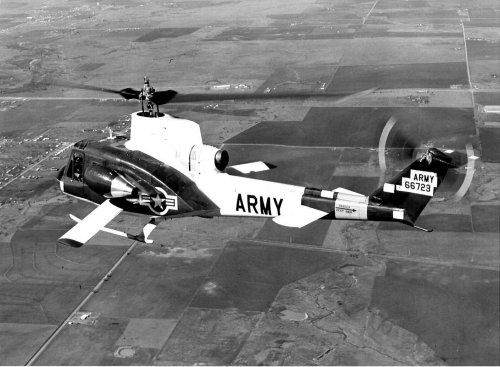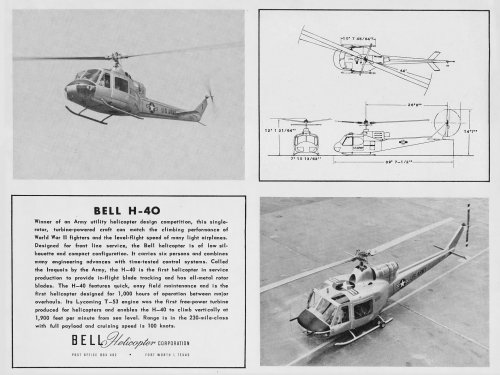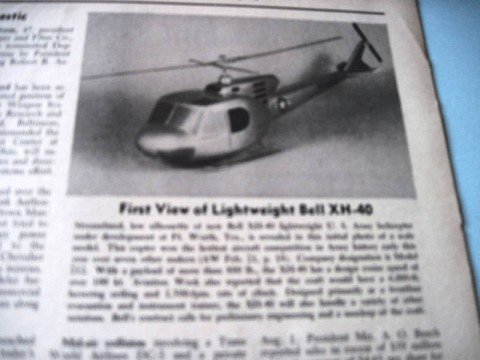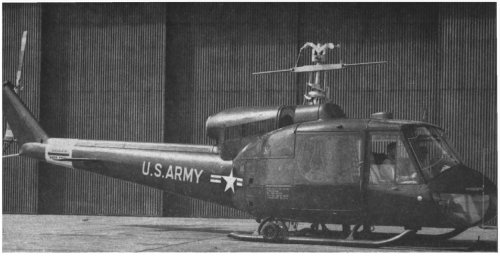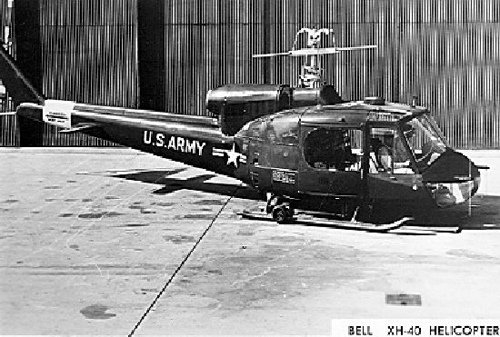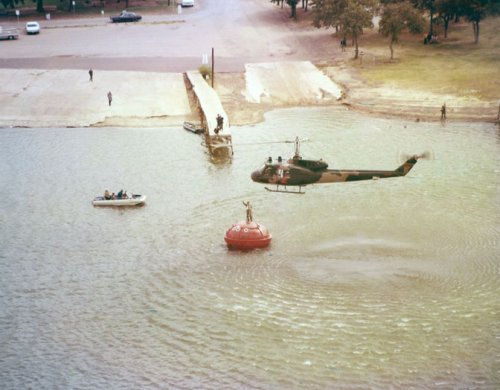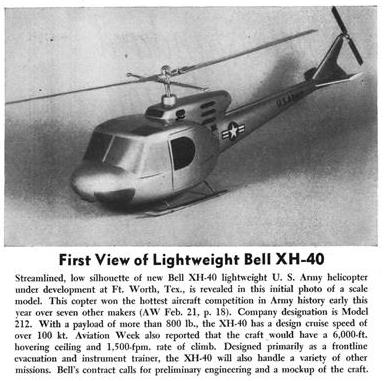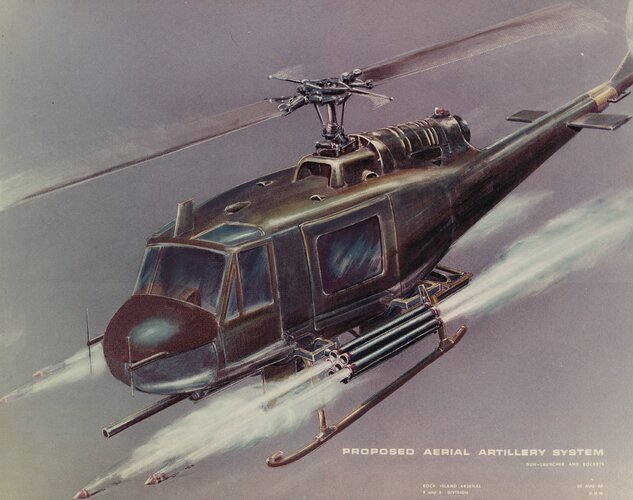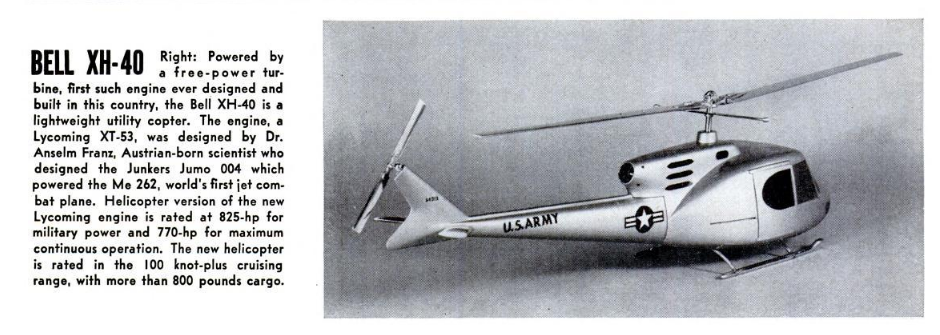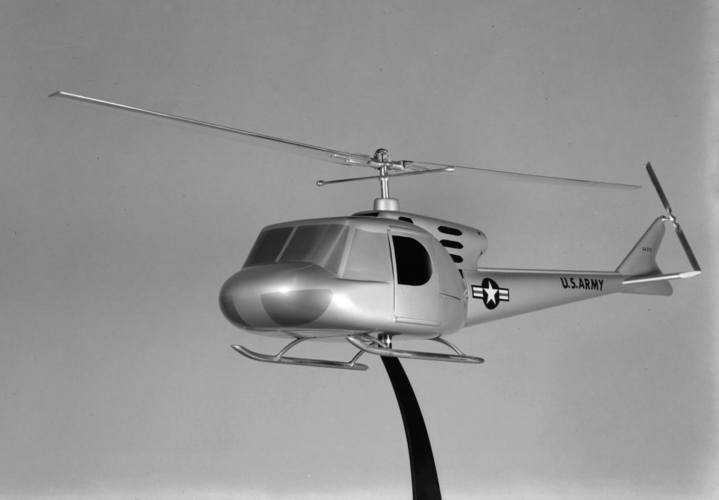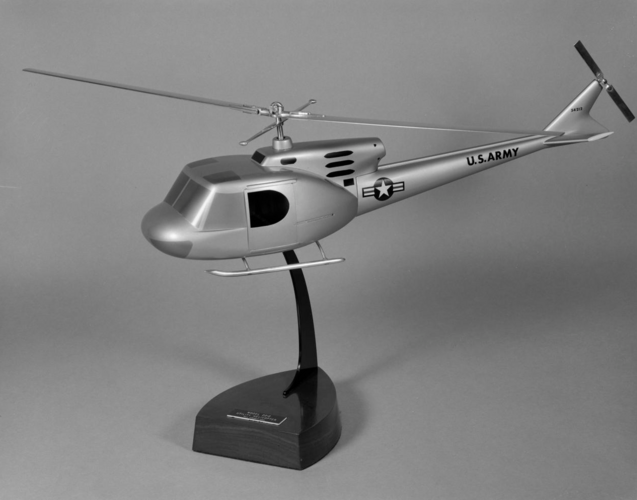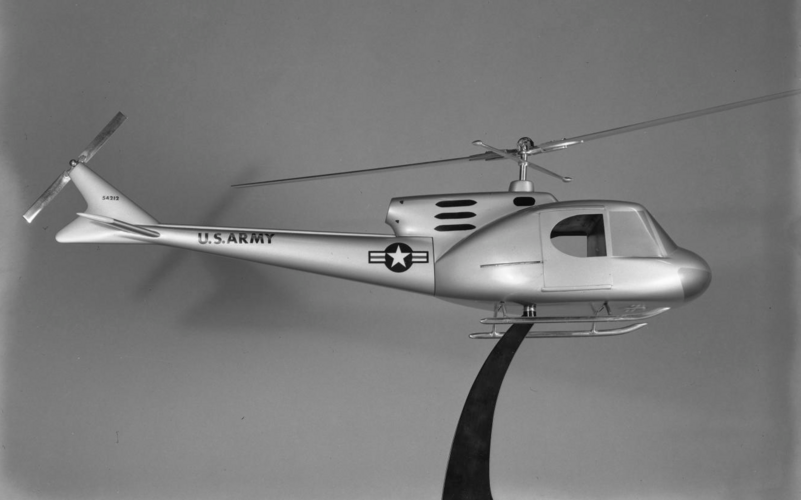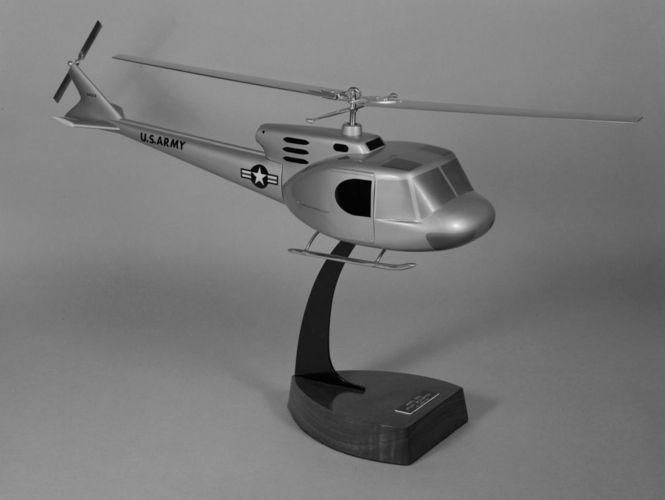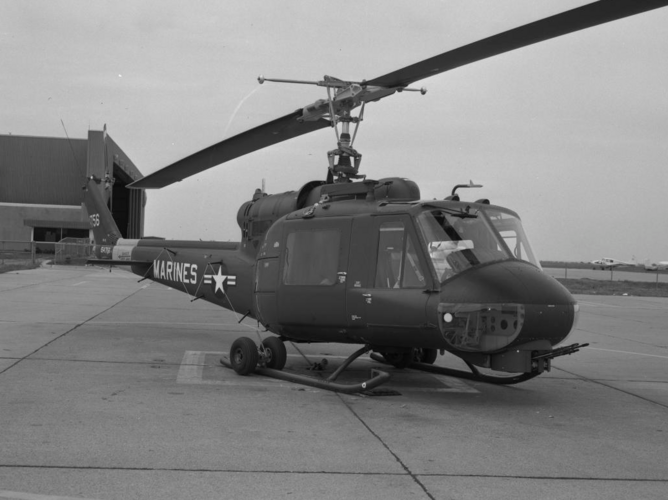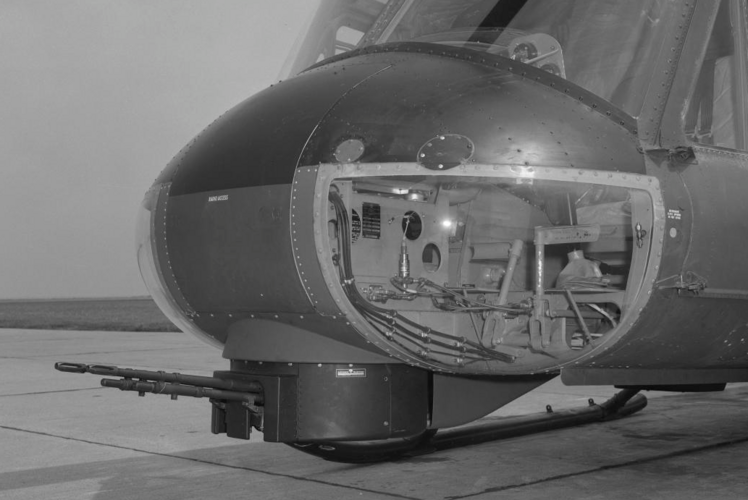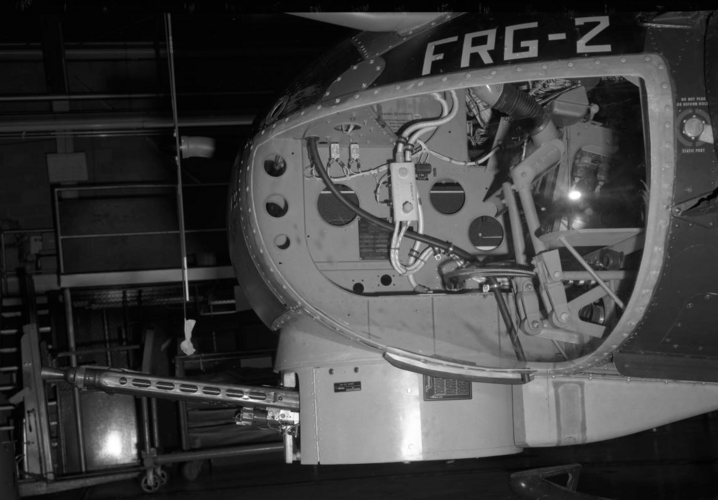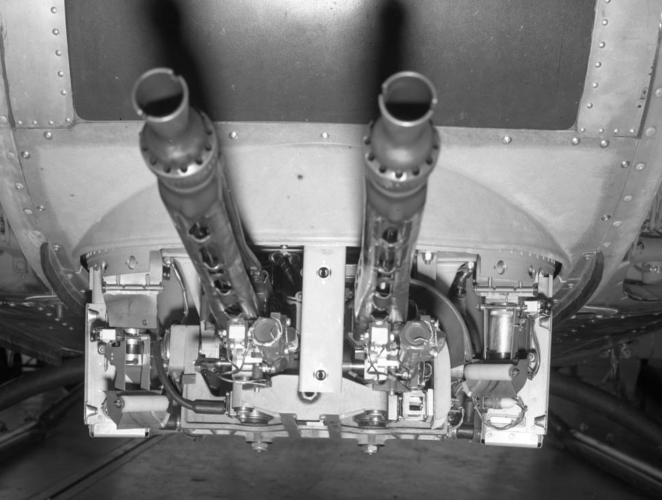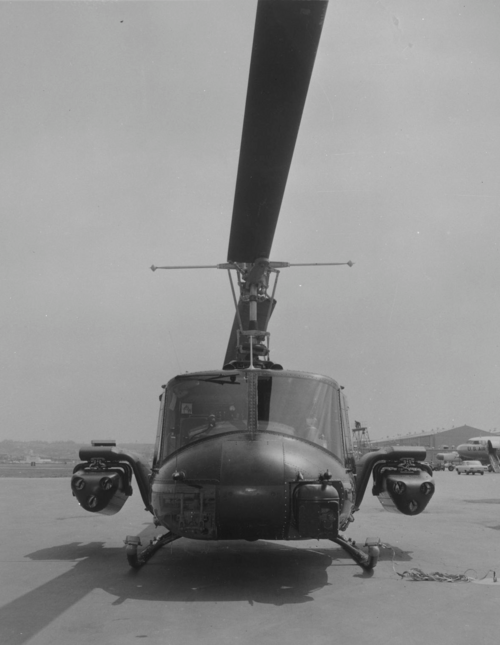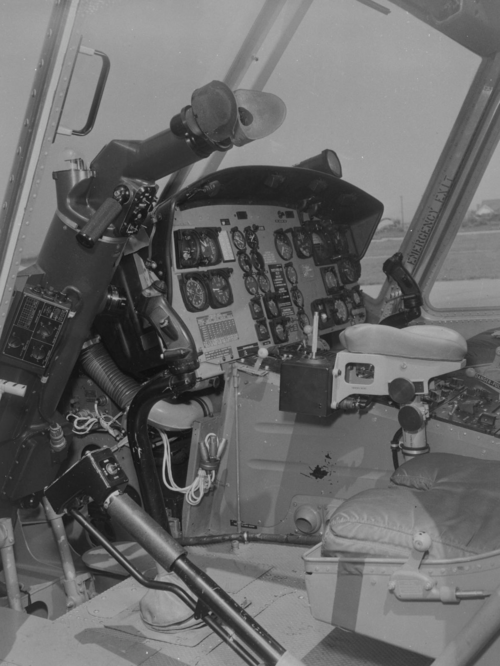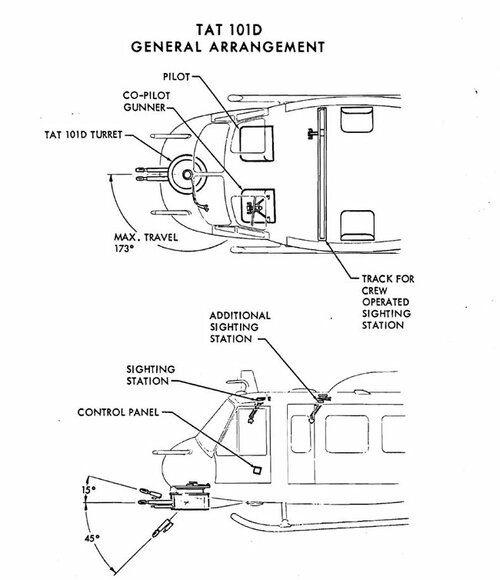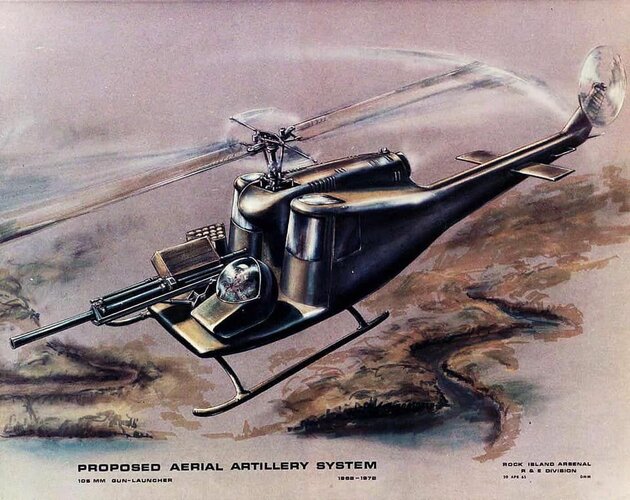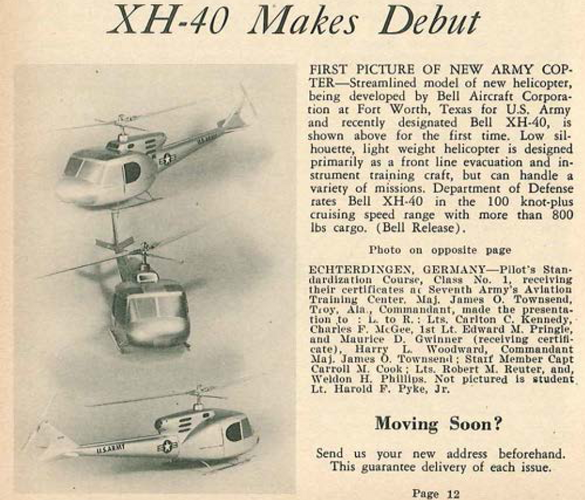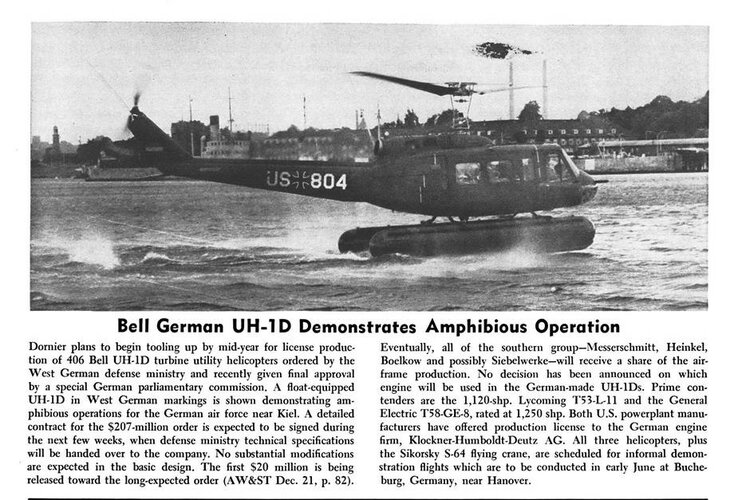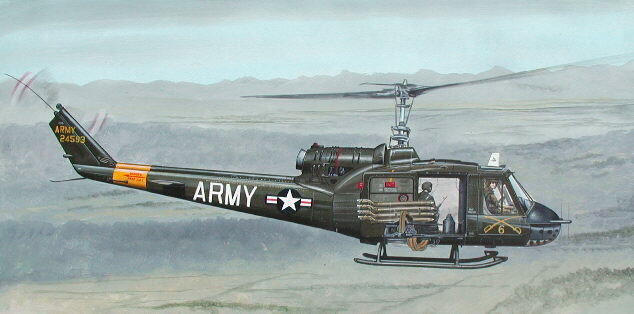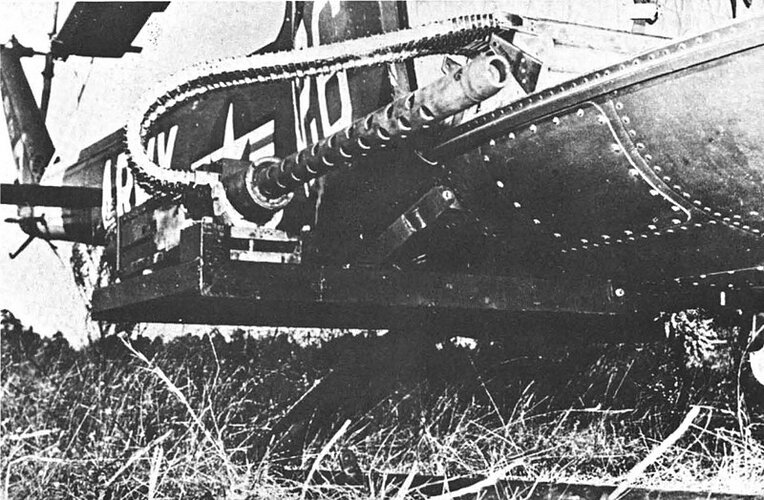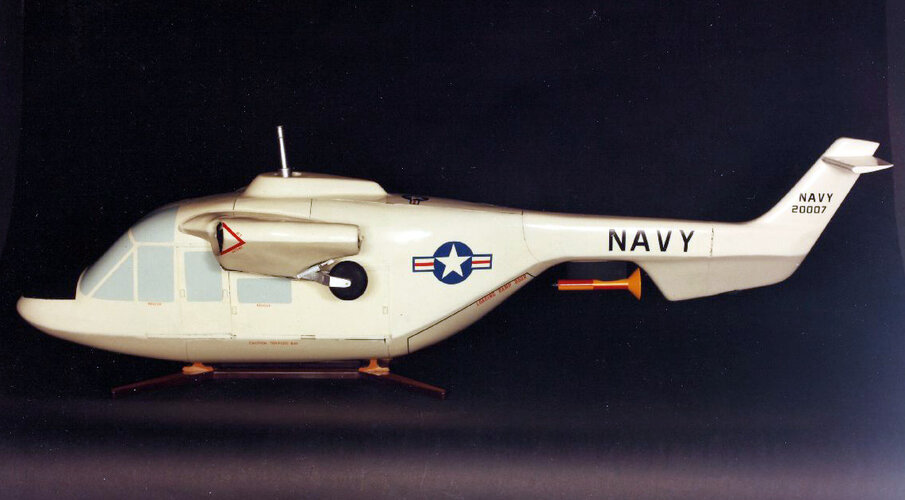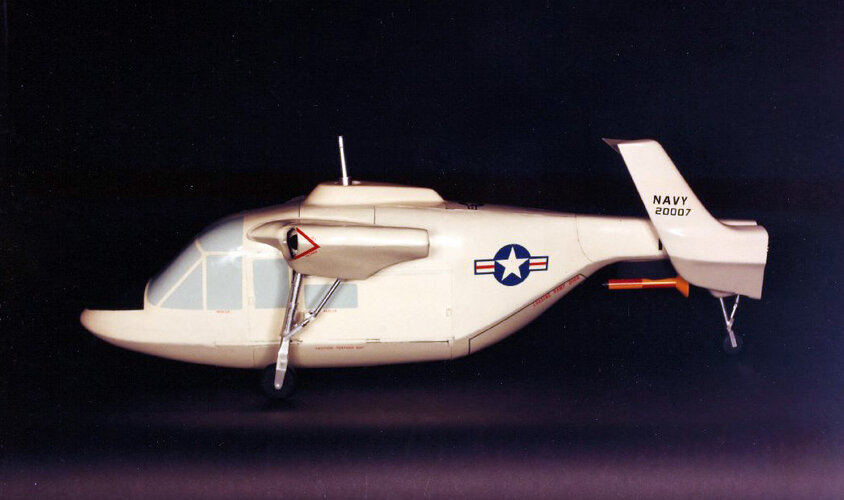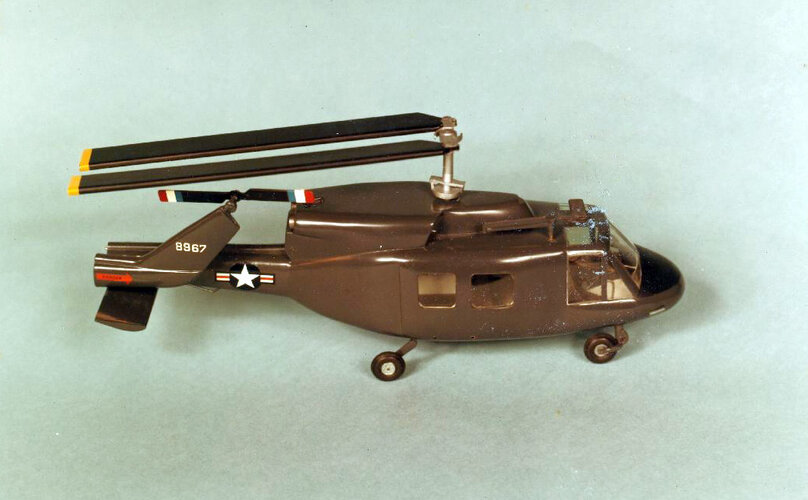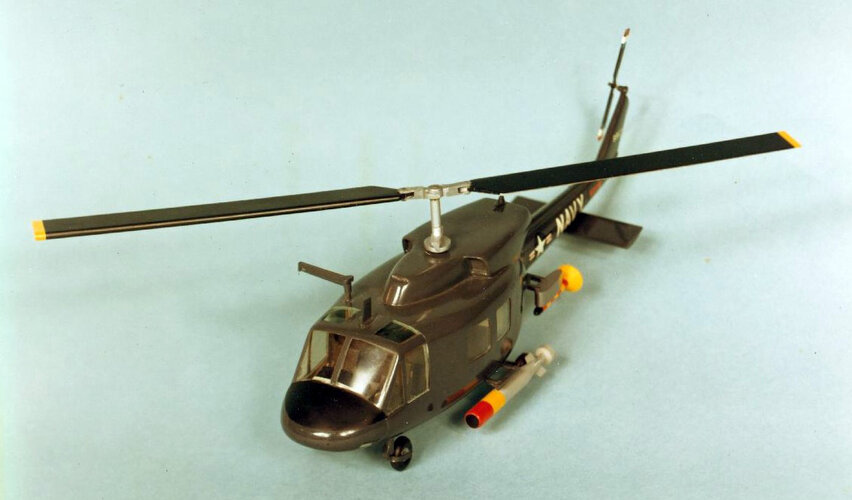You are using an out of date browser. It may not display this or other websites correctly.
You should upgrade or use an alternative browser.
You should upgrade or use an alternative browser.
Bell Model 204 / XH-40 / UH-1 Iroquois competitors, projects and modifications
- Thread starter Pioneer
- Start date
Kiltonge
Greetings Earthling
- Joined
- 24 January 2013
- Messages
- 636
- Reaction score
- 1,195
Advertising spread for the 211 Huey Tug ( or HueyTug as Bell rendered it )
https://sobchak.files.wordpress.com/2013/09/hueytugad.jpg
Flight says:
https://sobchak.files.wordpress.com/2013/09/hueytugad.jpg
Flight says:
3-ton crane capacity and o.g.e. hover to 4,000f
- Joined
- 25 June 2009
- Messages
- 14,754
- Reaction score
- 6,155
Kiltonge said:Advertising spread for the 211 Huey Tug ( or HueyTug as Bell rendered it )
Thanks a lot for this. Pics of the Model 211 are pretty hard to come by!
- Joined
- 3 June 2006
- Messages
- 3,094
- Reaction score
- 3,966
Here at sobchak website a video and an add from the 1950's showing the early Hueys "XH-40, YH-40 and HU-1A".
Link & Source: https://sobchak.wordpress.com/2015/04/27/ad-xh-40-1950s/
I didn't attach the video this time, because the music is not my style.
Dear mods, please merge the following topic to this topic.
Link: http://www.secretprojects.co.uk/forum/index.php/topic,13709.0.html
Link & Source: https://sobchak.wordpress.com/2015/04/27/ad-xh-40-1950s/
I didn't attach the video this time, because the music is not my style.
Dear mods, please merge the following topic to this topic.
Link: http://www.secretprojects.co.uk/forum/index.php/topic,13709.0.html
Attachments
Silencer1
That now I am the Ruler of the Queen's Navee!
- Joined
- 3 August 2009
- Messages
- 897
- Reaction score
- 582
After reading this topic I'm rediscovered Bell UH-1 for myself.
Very wise and simple design, allowing very long life in many services.
Ad with H-40 contains a 3-view of helicopter, which differs from the photos in the same ad - sliding doors have been less wider and entire fuselage seems to be shorter.
Could someone point me, is this 3-view based on some previous actually build prototype, or it's just a preliminary project, a step to the basic configuration?
And a very simple question - what is "Huey" mean?
Very wise and simple design, allowing very long life in many services.
Ad with H-40 contains a 3-view of helicopter, which differs from the photos in the same ad - sliding doors have been less wider and entire fuselage seems to be shorter.
Could someone point me, is this 3-view based on some previous actually build prototype, or it's just a preliminary project, a step to the basic configuration?
And a very simple question - what is "Huey" mean?
Bill Walker
Per Ardua ad Nauseum
"Huey" was a common south eastern US nickname for a male, generally used for someone a little on the large side. For example there is a town in Alabama called "Hueytown". Also, there was a cartoon character called Baby Huey.
"Baby Huey".
The helicopter gained this name when the the type designation HU-1A was introduced. Spell it Huia, and then pronounce it . If the US Army had come with a designation system that called it the BUD-1, today we would call it the "Buddy"
. If the US Army had come with a designation system that called it the BUD-1, today we would call it the "Buddy" 
I think the original prototype Bell Model 204 had the US military designation H-40, changing later to the US Army designation HU-1A, and finally becoming the UH-1A when the tri-service designaters were introduced.
"Baby Huey".
The helicopter gained this name when the the type designation HU-1A was introduced. Spell it Huia, and then pronounce it
I think the original prototype Bell Model 204 had the US military designation H-40, changing later to the US Army designation HU-1A, and finally becoming the UH-1A when the tri-service designaters were introduced.
Jos Heyman
ACCESS: Top Secret
- Joined
- 15 February 2007
- Messages
- 597
- Reaction score
- 80
Bill Walker is right.
Three XH-40 prototypes were ordered with serials 55 4459/4461 in May 1955 and the first flight took place on 22 October 1956. Following this a further development batch of 6 YH-40s with serials 56 6723/6728 was ordered on 19 October 1956. On 18 September 1962 the remaining XH-40s and YH-40s were redesignated as XH-40A. Production of the Bell 204, named Iroquois, took place under the HU-1A which were redesignated as UH-1A on 18 September 1962.
There was also an XH-48A designation for the prototype of a missile site support helicopter for the USAF with serial 63-13141.
Three XH-40 prototypes were ordered with serials 55 4459/4461 in May 1955 and the first flight took place on 22 October 1956. Following this a further development batch of 6 YH-40s with serials 56 6723/6728 was ordered on 19 October 1956. On 18 September 1962 the remaining XH-40s and YH-40s were redesignated as XH-40A. Production of the Bell 204, named Iroquois, took place under the HU-1A which were redesignated as UH-1A on 18 September 1962.
There was also an XH-48A designation for the prototype of a missile site support helicopter for the USAF with serial 63-13141.
Silencer1
That now I am the Ruler of the Queen's Navee!
- Joined
- 3 August 2009
- Messages
- 897
- Reaction score
- 582
Dear Bill Walker and Jos Heyman!
Thanks a lot for comprehensive answers!
Surely this cartoon not only contains answer to my question about origin of helicopter's nickname, but a fun story as well.
You made my day!
Although my question about 3-view still unanswered... Perhaps for just a time?
Thanks a lot for comprehensive answers!
Bill Walker said:"Huey" was a common south eastern US nickname for a male, generally used for someone a little on the large side. For example there is a town in Alabama called "Hueytown". Also, there was a cartoon character called Baby Huey.
Surely this cartoon not only contains answer to my question about origin of helicopter's nickname, but a fun story as well.
You made my day!
Although my question about 3-view still unanswered... Perhaps for just a time?
- Joined
- 18 October 2006
- Messages
- 4,211
- Reaction score
- 4,921
While I like the story of the portly southern gentleman as part of the legacy, there is also the point that the Utility Helicopter - 1 was originally classified as a Helicopter, Utility - 1.
HU-1 most likely got translated into "We have flying in HU's (spoken: 'Hueys') today." And "Woohoo! I'm getting a Huey transition!" Rolls off the tongue easier.
At least that is the lore I got told back when I was flying them.
(Edit) Sorry did not fully read Bill Walker's post.
HU-1 most likely got translated into "We have flying in HU's (spoken: 'Hueys') today." And "Woohoo! I'm getting a Huey transition!" Rolls off the tongue easier.
At least that is the lore I got told back when I was flying them.
(Edit) Sorry did not fully read Bill Walker's post.
- Joined
- 3 June 2006
- Messages
- 3,094
- Reaction score
- 3,966
The Army Aviation Museum at Fort Rucker, Alabama, is restoring the XH-40 prototype.
https://youtu.be/_2-_qj_V20w
News link:
http://www.southeastsun.com/news/article_45ce86fa-16c7-11e5-9e09-8b972d3a05e5.html
Video via sobchakvideos:Fort Rucker, Alabama, June 2015. Mitchell estimates it will take one year to refurbish the Huey, and once it's ready, the organization is planning a big celebration, welcoming the aircraft back to Fort Rucker for display at the museum.
https://youtu.be/_2-_qj_V20w
Code:
https://youtu.be/_2-_qj_V20wNews link:
http://www.southeastsun.com/news/article_45ce86fa-16c7-11e5-9e09-8b972d3a05e5.html
- Joined
- 25 June 2009
- Messages
- 14,754
- Reaction score
- 6,155
Silencer1 said:Although my question about 3-view still unanswered... Perhaps for just a time?
I only happened on this thread's recent developments now, and this is a very interesting question indeed.
After checking my XH-40 file, I could find only three other images featuring this window arrangement: one is a scale model appearing in an article when the program was made public, and the other two apparently show the first prototype in an early form (unless it's a mockup, which is also possible).
Attachments
Silencer1
That now I am the Ruler of the Queen's Navee!
- Joined
- 3 August 2009
- Messages
- 897
- Reaction score
- 582
Dear Skyblazer!
Thanks for sharing the pictures of initial version!
This is, that I'm looking for.
I wonder is the Bell company experience in P-39 and P-63 fighters with middle-placed engine, extension shaft any gearbox helps it the design of helicopters?
At least, they have bold ideas, how to did that.
Thanks for sharing the pictures of initial version!
This is, that I'm looking for.
I wonder is the Bell company experience in P-39 and P-63 fighters with middle-placed engine, extension shaft any gearbox helps it the design of helicopters?
At least, they have bold ideas, how to did that.
Kiltonge
Greetings Earthling
- Joined
- 24 January 2013
- Messages
- 636
- Reaction score
- 1,195
Silencer1 said:And a very simple question - what is "Huey" mean?
"Call for Huey" is old soldier slang for vomiting. Combined with the original designation of HU-1A, pronounced Heww-one-ayy, its nickname was pretty much inevitable.
~~
Found some more details of the 211 HueyTug in an unlikely place, Proceedings of the Merchant Marine Council 1970:
The Bell Helicopter Co. using their "Huey Tug" lifted the 5,400-pound capsule from
the water and demonstrated the ability of the capsule to be delivered by airlift to survivors.
The capsule was dropped from altitudes of 10, 15, and 35 feet without sustaining any
damage. With a single suspension pendant it was easily hooked onto the external
cargo hook below the helicopter. Release of the capsule can be made from inside the
capsule, on top of it, or from the helicopter when the strain is off the pendant or from
within the helicopter with the strain on the pendant.
The "Huey Tug" is capable of delivering the capsule at a weight of 6,000 pounds 125 miles
and returning to its point of departure (no wind conditions). The tug experienced no
difficulty in flying with the capsule with speeds up to 100 miles per hour. There was no
tendency of the capsule to oscillate in flight.
The "Huey Tug" was reported, by company representatives, to have lifted loads up to 8,000
pounds.
www.uscg.mil/proceedings/archive/1970/Vol27_No9_Sep1970.pdf
Attached is a photo of the capsule trials from University of Texas website.
Also a fairly excoriating Army Preliminary Evaluation found on DTIC. What I hadn't read before about the 211 was that the rotor-mast was also extended vertically by 12 inches, perhaps to give sufficient boom & TR clearance for the larger rotor. Quite evident in photos now that I know to look.
The helicopter had eight deficiencies which require mandatory corrections. Two of these are
major design deficiencies that may require extensive engineering redesign.
They are the directional oscillations in the 30 to 60 KIAS airspeed range, especially prevalent
during heavy sling load missions; .lack of sufficient directional control margin during high
gross weight (14,000 pounds) and high density altitude (above 4000 feet) conditions.
www.dtic.mil/dtic/tr/fulltext/u2/849063.pdf
Attachments
- Joined
- 26 May 2006
- Messages
- 34,911
- Reaction score
- 15,789
Skyblazer said:Silencer1 said:Although my question about 3-view still unanswered... Perhaps for just a time?
I only happened on this thread's recent developments now, and this is a very interesting question indeed.
After checking my XH-40 file, I could find only three other images featuring this window arrangement: one is a scale model appearing in an article when the program was made public, and the other two apparently show the first prototype in an early form (unless it's a mockup, which is also possible).
A clearer view;
Attachments
RavenOne
ACCESS: Top Secret
- Joined
- 18 June 2008
- Messages
- 1,005
- Reaction score
- 2,690
Happy New Year all and hope you all had a great Xmas -
Here is one I have dug up from my book (all images credited to Bell UH-1D >>Huey<< by Robert Busse) which was a 1969 experiment by Daimler Benz using Bell UH-1D , s/n 64-13881 which was the fourth one built under license by Dornier (?). The experiment was to use a
DB720 / PT706 twin-shaft turbine. They basically made changes to the fuel cells and drive shaft thus giving the awkward look
There were long term plans to use this engine across the Bundeswehr fleet of UH-1D but it never amounted to that in the end.
cheers


Here is one I have dug up from my book (all images credited to Bell UH-1D >>Huey<< by Robert Busse) which was a 1969 experiment by Daimler Benz using Bell UH-1D , s/n 64-13881 which was the fourth one built under license by Dornier (?). The experiment was to use a
DB720 / PT706 twin-shaft turbine. They basically made changes to the fuel cells and drive shaft thus giving the awkward look
There were long term plans to use this engine across the Bundeswehr fleet of UH-1D but it never amounted to that in the end.
cheers


- Joined
- 18 May 2019
- Messages
- 640
- Reaction score
- 1,673
Bell model 533
- Joined
- 11 March 2012
- Messages
- 3,250
- Reaction score
- 3,179
Only two rotor blades vastly reduced parts count and complexity for all of Bell's early helicopters. Since the advancing blade is trying to lag (decelerate) at the same time as the retreating blade is trying to advance its lead (accelerate), the two blades do not need to be hinged independently. Since the advancing blade is trying to lift at the same time as the retreating blade is trying to dip, they do not need to be hinged independently. Two bladed teetering rotors don't need hinges or dampeners for lead-lag or flapping. This allows them to fly with only a tiny parts count compared with fully-articulated rotors using 3 or more blades.
Arthur M. Young (1905 - 1995) developed his simple rotor system independently before offering it to Bell during the early 1940s. By the late 1940s, Bell was manufacturing Model 47s and Young's work was done, so he returned to his first love: philosophy.
Fast forward to the prototype UH-1, it is amazing how much growth potential the basic Huey had. While the prototype only had 6 seats (like an Aerospatiale A-Star) it eventually grew to the 214ST that could carry 16 or 18 people!
By the time I was wrenching on RCAF Twin Hueys (Model 212) - and parachuting out of Bundeswehr UH-1Ds - they already had a foot long extension ahead of the sliding cargo doors. Cargo doors slid back to reveal two or three more seats alongside the transmission. The tail boom also had a 2 foot-ish long extension to accommodate longer main rotors.
The 214ST was originally developed for the Royal Iranian Air Force who needed greater lift capacity (gross weight 17,600 pounds), especially at high density altitudes in the Iranian mountains. That deal fell through after the Shah was deposed in 1979, but Bell still built almost a hundred 214STs for the off-shore oil industry. Pierre Fourand explained that the ST's wide rotor blades were so massive that they could not auto-rotate, even if you buried the collective lever as the engine quit! Those wide rotor blades were later installed on some later versions of Huey Cobra attack helicopters.
The 4-bladed main rotors installed on model 414 (CH-135 Griffin in RCAF service) are a completely new design that is semi-rigid and reduces parts count by allowing blade roots to flex a little.
Master Corporal (retired) Rob Warner CD, BA, etc.Air Frame
Arthur M. Young (1905 - 1995) developed his simple rotor system independently before offering it to Bell during the early 1940s. By the late 1940s, Bell was manufacturing Model 47s and Young's work was done, so he returned to his first love: philosophy.
Fast forward to the prototype UH-1, it is amazing how much growth potential the basic Huey had. While the prototype only had 6 seats (like an Aerospatiale A-Star) it eventually grew to the 214ST that could carry 16 or 18 people!
By the time I was wrenching on RCAF Twin Hueys (Model 212) - and parachuting out of Bundeswehr UH-1Ds - they already had a foot long extension ahead of the sliding cargo doors. Cargo doors slid back to reveal two or three more seats alongside the transmission. The tail boom also had a 2 foot-ish long extension to accommodate longer main rotors.
The 214ST was originally developed for the Royal Iranian Air Force who needed greater lift capacity (gross weight 17,600 pounds), especially at high density altitudes in the Iranian mountains. That deal fell through after the Shah was deposed in 1979, but Bell still built almost a hundred 214STs for the off-shore oil industry. Pierre Fourand explained that the ST's wide rotor blades were so massive that they could not auto-rotate, even if you buried the collective lever as the engine quit! Those wide rotor blades were later installed on some later versions of Huey Cobra attack helicopters.
The 4-bladed main rotors installed on model 414 (CH-135 Griffin in RCAF service) are a completely new design that is semi-rigid and reduces parts count by allowing blade roots to flex a little.
Master Corporal (retired) Rob Warner CD, BA, etc.Air Frame
youROKer
ACCESS: Confidential
- Joined
- 15 May 2013
- Messages
- 107
- Reaction score
- 445
Interesting set of weapons. Source:
View: https://www.facebook.com/RIAMuseum/photos/1208108189539146
Attachments
- Joined
- 29 January 2008
- Messages
- 916
- Reaction score
- 2,055
- Joined
- 29 January 2008
- Messages
- 916
- Reaction score
- 2,055
Model of H-40, 3-blade with different cargo/troop carrying configurations. Photos dated 1958.
Attachments
-
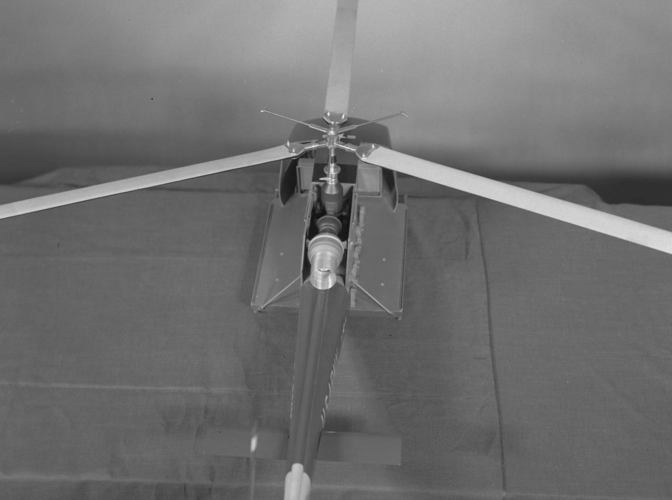 download (4).png578.8 KB · Views: 137
download (4).png578.8 KB · Views: 137 -
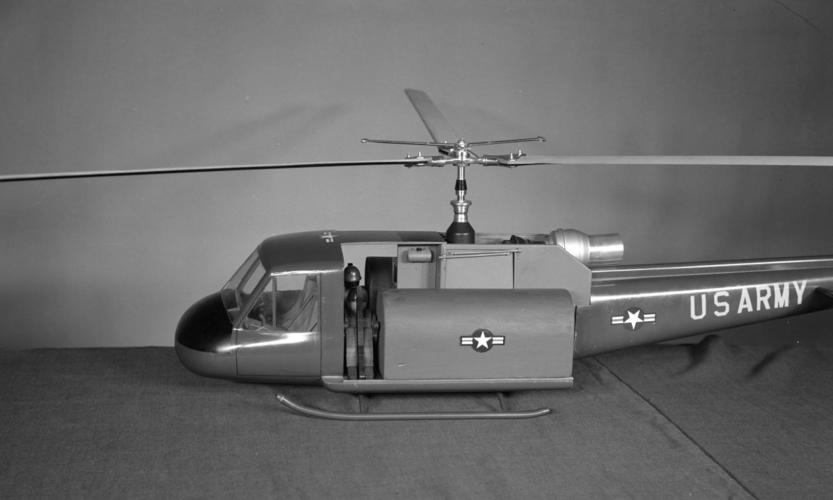 H40 troop carrier 1958.png588.6 KB · Views: 138
H40 troop carrier 1958.png588.6 KB · Views: 138 -
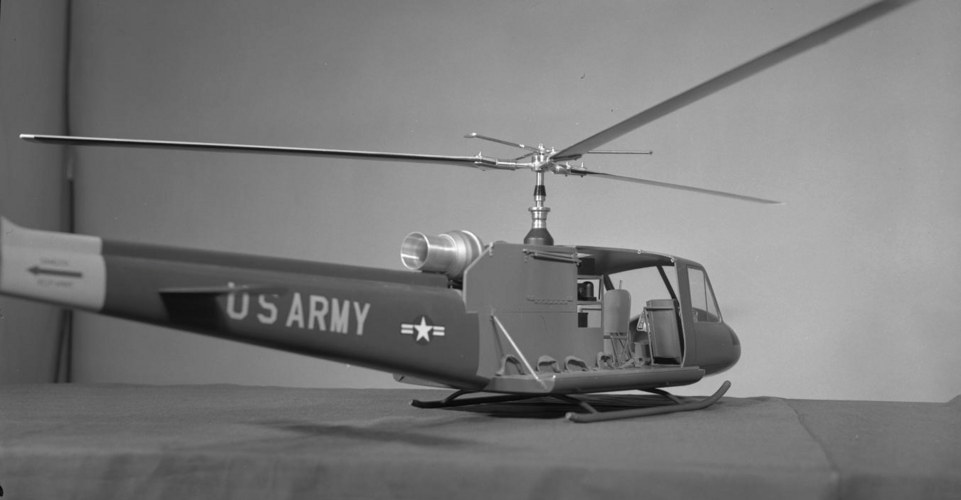 download (10).png483.4 KB · Views: 145
download (10).png483.4 KB · Views: 145 -
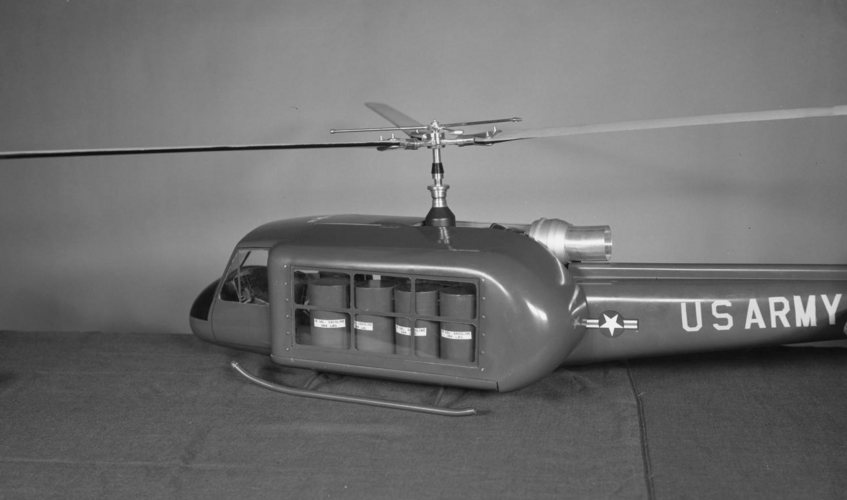 download (12).png552 KB · Views: 139
download (12).png552 KB · Views: 139 -
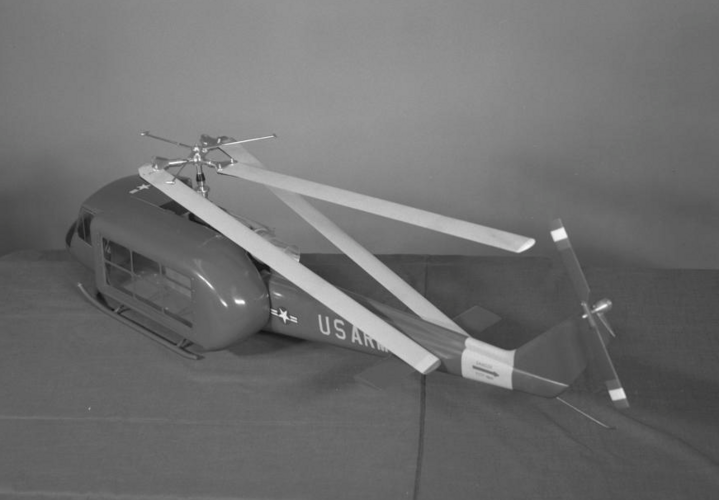 download (5).png258.7 KB · Views: 137
download (5).png258.7 KB · Views: 137 -
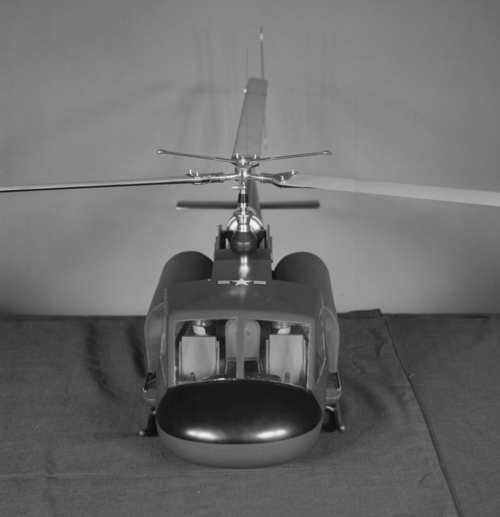 download (8).png665.7 KB · Views: 147
download (8).png665.7 KB · Views: 147 -
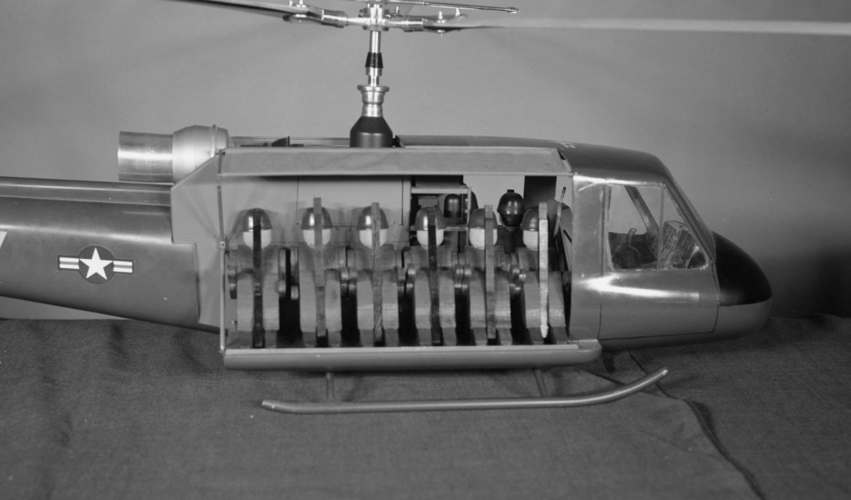 download (6).png582.8 KB · Views: 161
download (6).png582.8 KB · Views: 161 -
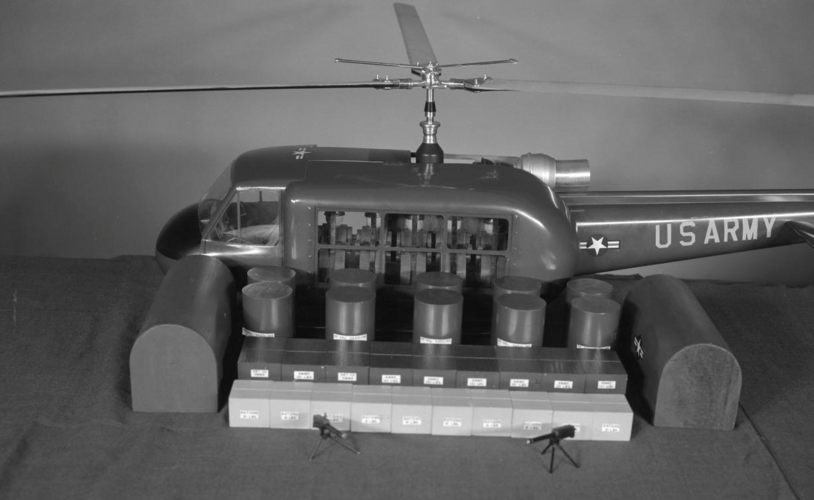 Cargo.png555.5 KB · Views: 171
Cargo.png555.5 KB · Views: 171
- Joined
- 29 January 2008
- Messages
- 916
- Reaction score
- 2,055
Note "FRG-2" on the nose of the MG43 equipped version. Unsurprising that the Federal Republic of Germany might be interested in a version armed with their gun.Huey with a chin turret. One with M60's and the other with MG43's?
- Joined
- 11 March 2012
- Messages
- 3,250
- Reaction score
- 3,179
Minor correction, that looks like a pair of MG42 machine guns. MG42 was introduced during World War 2 firing 7.92 mm ammo. During the Cold War, the revived West German Army put the MG42 back into production, but re-barreled it to fire NATO 7.62 x 51 mm ammo and called it MG1 or MG3. West Germany also licensed MG3 production to Greece, Iran, Italy, Pakistan, Spain, Sudan and Turkey.Huey with a chin turret. One with M60's and the other with MG43's?
This is the unsuccessful Emerson Electric TAT-101D Tactical Armament Turret specified for Marine UH-1Es. It proved unreliable and was soon removed from the aircraft.Huey with a chin turret. One with M60's and the other with MG43's?
Attachments
- Joined
- 18 May 2019
- Messages
- 640
- Reaction score
- 1,673
The target drone QUH-1
Last edited:
- Joined
- 18 October 2006
- Messages
- 4,211
- Reaction score
- 4,921
Arrgh! My eyes! The most hideous abomination ever to besmirch these pages. I unfriend you @RAPFound on the internet, no other details.
- Joined
- 3 June 2006
- Messages
- 3,094
- Reaction score
- 3,966
See the thread 'Proposed Aerial Artillery System' : https://www.secretprojects.co.uk/threads/proposed-aerial-artillery-system.31797/Found on the internet, no other details.
Motocar
I really should change my personal text
- Joined
- 16 May 2014
- Messages
- 1,083
- Reaction score
- 1,144
Repost Bell Model 533 cutaway
- Joined
- 13 June 2007
- Messages
- 2,173
- Reaction score
- 3,095
Be ready to spend a few hours perusing thru these images - plenty of early H-40/HU-1 images and models of various concepts.
 texashistory.unt.edu
texashistory.unt.edu
Film of the XH-40: https://texashistory.unt.edu/ark:/67531/metadc2017320/m1/
Proposed cargo variant of the XH-40 - note the 3 blade rotor: https://texashistory.unt.edu/ark:/67531/metadc949884/m1/1/
Proposed float equipped version XH-40: https://texashistory.unt.edu/ark:/67531/metadc949857/m1/1/ &
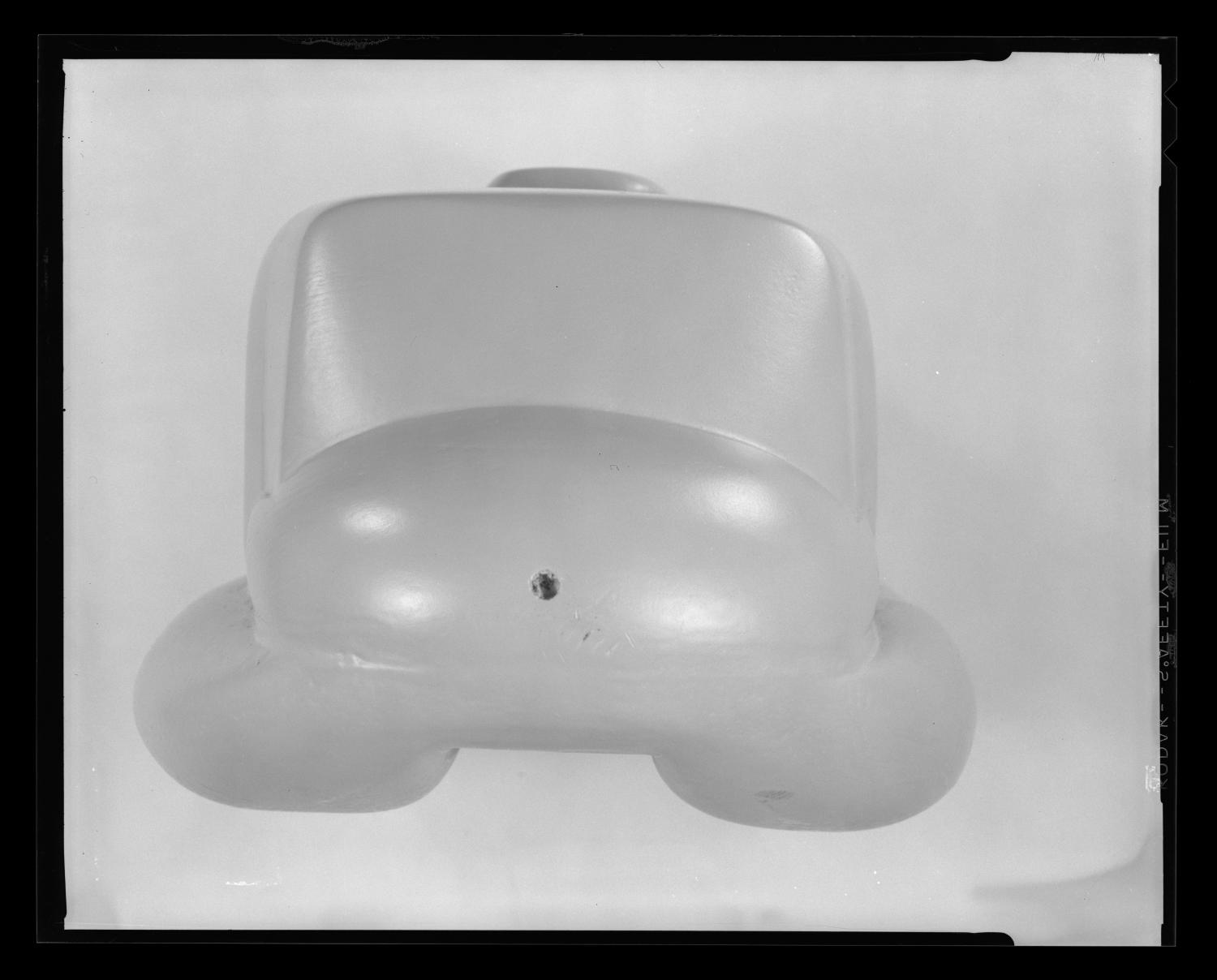
 texashistory.unt.edu
texashistory.unt.edu
Enjoy the Day! Mark
Search Results - - 1,394 Results - The Portal to Texas History
Film of the XH-40: https://texashistory.unt.edu/ark:/67531/metadc2017320/m1/
Proposed cargo variant of the XH-40 - note the 3 blade rotor: https://texashistory.unt.edu/ark:/67531/metadc949884/m1/1/
Proposed float equipped version XH-40: https://texashistory.unt.edu/ark:/67531/metadc949857/m1/1/ &
[Model of an XH-40 Float model helicopter]
Photograph of a model of an experimental XH-40 Float model helicopter, front view, re-shot on a white background.
Enjoy the Day! Mark
Last edited:
kenfalzon
I really should change my personal text
- Joined
- 22 September 2011
- Messages
- 33
- Reaction score
- 19
Anyone having further photos of this Huey? Found this on wikimedia commons but could not find anything more on the internet. Caption says:
".50 caliber M-2 and M-3 kits for the UH-1B helicopter and the Womack kit, designed by the division's CWO Clemuel H. Womack, which included twin .30 caliber machine guns and two 2.75-inch FFAR launcher pods of 24 rockets each."
".50 caliber M-2 and M-3 kits for the UH-1B helicopter and the Womack kit, designed by the division's CWO Clemuel H. Womack, which included twin .30 caliber machine guns and two 2.75-inch FFAR launcher pods of 24 rockets each."
Attachments
- Joined
- 29 January 2008
- Messages
- 916
- Reaction score
- 2,055
More from SDASM Flickr. Two Bell designs for navy helicopters, one looks like a UH-1 with landing gear, folding tail and rotors. No information for either desigin. More helicopter photos at:

 www.flickr.com
www.flickr.com
The SDASM Flickr site has lots of amazing stuff but you have to slog through it. You can go through pages of cocktail party photos, assembly photos of aircraft/missile componants, WW1 and 2 photos of everything from aircraft to someones battlefield dog sleeping in a jeep and then bang! you find a few pictures like these. The captions can be hit or miss if there even is one and I've seen many photographs misidentifed. If you every wanted to research old Apollo spacecraft designs, Ryan RPV's, Titan missies, GD cruise missiles, this site would be a great source. With over 3700 pages of photos, it takes a long time to get through but I think there is somehting there for everyone with an interest in Aerospace.

Naval Helicopter Historical Society Collection
This collection contains photographs from the Naval Helicopter Historical Society. There are several hundred photographs in the collection; more will be added in the coming weeks. The NHHS Collection contains many never before seen images which highlight the exciting history of Naval Helicopter...
The SDASM Flickr site has lots of amazing stuff but you have to slog through it. You can go through pages of cocktail party photos, assembly photos of aircraft/missile componants, WW1 and 2 photos of everything from aircraft to someones battlefield dog sleeping in a jeep and then bang! you find a few pictures like these. The captions can be hit or miss if there even is one and I've seen many photographs misidentifed. If you every wanted to research old Apollo spacecraft designs, Ryan RPV's, Titan missies, GD cruise missiles, this site would be a great source. With over 3700 pages of photos, it takes a long time to get through but I think there is somehting there for everyone with an interest in Aerospace.
Attachments
- Joined
- 6 September 2006
- Messages
- 4,834
- Reaction score
- 9,460
I wonder if the first one was a LAMPS I design?Two Bell designs for navy helicopters, one looks like a UH-1 with landing gear, folding tail and rotors. No information for either desigin
Certainly looks like they were attempting to limit stowed length and height, which suggests intended operation from frigate-sized ships.
Internal torpedo stowage too, yet the MAD is hanging off the boom. Interesting.
- Joined
- 29 January 2008
- Messages
- 916
- Reaction score
- 2,055
Found another picture of the Huey model for navy use here:
View: https://www.flickr.com/photos/sdasmarchives/6313193270/in/album-72157627928485093/
View: https://www.flickr.com/photos/sdasmarchives/6313193270/in/album-72157627928485093/
Attachments
Similar threads
-
Bell UH-1 with retractable skids, large belly radar antenna
- Started by AeroFranz
- Replies: 10
-
-
AAH Competition (AH-64 rivals)
- Started by overscan (PaulMM)
- Replies: 8
-
-
Convair Model 49 Advanced Aerial Fire Support System
- Started by Triton
- Replies: 144

